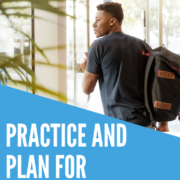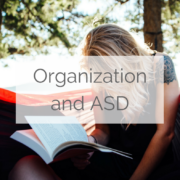Harmony During COVID
Working, personal life, and taking care of children keeps most of us busy regularly. As COVID lingers on, many are becoming more stressed and overwhelmed if you throw in some executive function challenges that takes it to a whole new level of overwhelming.
You can bring some harmony to your home and your life. Here are some ideas:
Prioritize self-care –
I know it may seem like you don’t have the time, but self-care is the last thing we should eliminate from our routines when we are busy. It is the same idea as the saying, “Put on your own oxygen mask first.” This concept isn’t selfish or a luxury. It is a necessity to be able to take care of your responsibilities (both work and personal) and your self. Bare minimum self-care should include exercising, eating healthy food, safely socializing with family and friends, and enjoying hobbies. Without self-care, our brains don’t function at their best.
Have reasonable expectations –
Just because you aren’t driving to work or school doesn’t mean you suddenly have that mean extra time. There are only so many hours in a day. Most of your time is probably spoken for already, which means you shouldn’t expect to complete a long to-do this. Pick three top want-to-do items and be happy if you get one of them completed. Notice I said want-to-do and not should-do items. For the neurodiverse, ‘should’ might as well be a four-lettered word. Interest is what motivates us to complete a task, not what is important.
Have a routine –
Routines are great. They are like trellises that your roses need to grow. For someone with ADHD, a routine doesn’t have to be restrictive; it can be loose most of the time. Novelty is the key to creating and sticking to a routine; however, it stops being supportive once it isn’t novel. That is okay; you just need to change it up a bit to make it novel again. Be creative and have fun with it. For someone with ASD, a tighter routine in some parts of the day will feel more supportive. Communicate that to those you live with.
The routine will be best if it is set up with others in the home. Divide and conquer may sometimes work so that each parent can have a break. Working together may work at other times to provide accountability.
Set boundaries –
I think of boundaries as decisions I have already thought about and made. If it is helpful, write down how you made that decision so that your future self can trust it was the right one. Boundaries can include when to stop working for family time, when it is family time, when is it school time, when is it self-care time, what I am willing to do, what I am not willing to do. Some people need to process this verbally, some people need to journal to process this, and some need to think about it (it may look like they are daydreaming, but they are thinking). An essential part of harmony is being wholly present in whatever you are doing at that moment.
Take regular breaks –
Breaks are needed. No one can be on task all the time. A Pomodoro timer can be helpful for everyone in the family since they are adjustable. Good things to do during a break, drink water, go outside, exercise a little, stretch, eat a healthy snack, pet the family pet, check on your kids and tell them they are doing great, or show some love to someone in some way. These are all things you can do as a family or on your own, whatever you need. A break is not emails, business phone calls, or calls to make personal appointments.
Create transition times–
Neurodiverse people need transition times. This time is not just a reminder signaling to stop one task and move into another. This time is about 10-15 minutes, where you have time to wrap up a task and move into something else. Transition times should be throughout the day. Here are some examples: between doing anyone on your computer and leaving the house, between working or schooling and eating, between eating and working. It is not signaling that the task is totally complete; it may be, but it might need more work. Neurodiverse people can be great at hyperfocusing, which can be a gift, but if it is causing you not to engage with others or be aware of your own bodily needs, it is working against you. Often I hear, “I have to work until I am done, or I will forget to go back and finish.” Leave yourself a note or other kind of reminder about where you need to pick up again, eat or play with your kid, or talk to your loved one.
Work/school space –
We aren’t meant to work from home. It is not ideal for easily distracted people who have kids, spouses, pets, or dishes in the sink. But it is where we are for now. The right working environment is something my clients and I talk about quite a bit. Think about what you need. Silence vs. background noise, desk vs. comfortable seating, supplies visible vs. clean cleared off working space. See BLOG for more distinctions and then create that environment as best you can for everyone in the house.
Pro-Active communication –
I can’t say enough about how communication is at the center of a happy life. Ask for what you need in advance.
Everyone can chip in to help with household chores –
Your kids may not be happy with this part, but they can help out too. Even a little bit can feel like a huge difference. Look here for Chores for ages 2 and under, 3-5, 6-9, 10-13, 14, and up.
Don’t be a people pleasure –
Don’t say yes to anything extra on the spot. Say, “Thank you for think of me, but I am going to need to look at my schedule to be sure I can do it well.” Or say No! People will not dislike you because you can’t do something—another area to have boundaries around.
Habit-forming –
Much of the work I do is around habit-forming. SO here are small key pieces to think about:
- Habits are best formed when done daily.
- New habits are easiest to remember when anchored to an existing habit.
- We are likely to take on the habits of those around us.
So if you want to change, you need to get the buy-in of those around you.
Have a spouse that doesn’t have ADHD, but you do! Check this out!


Big Bang Coaching, LLC provides coaching for the neurodiverse.















